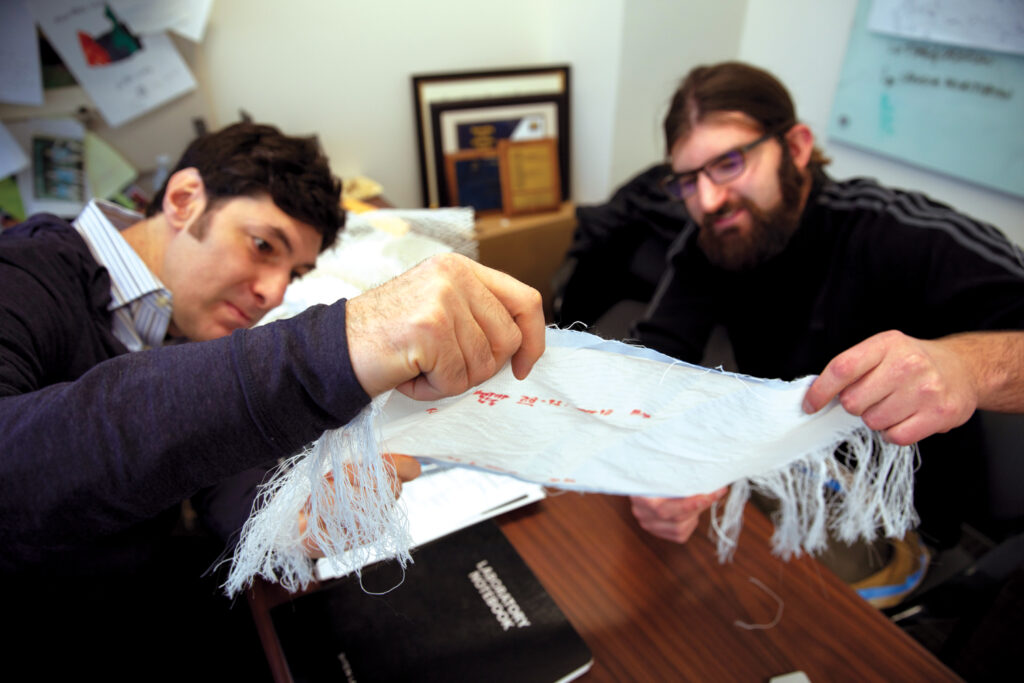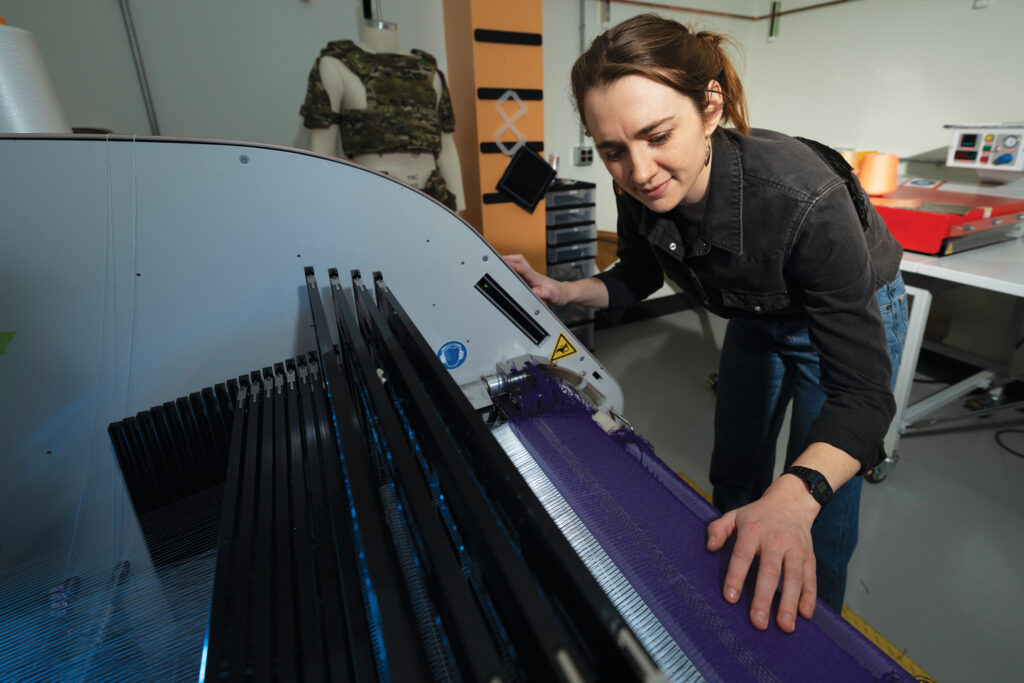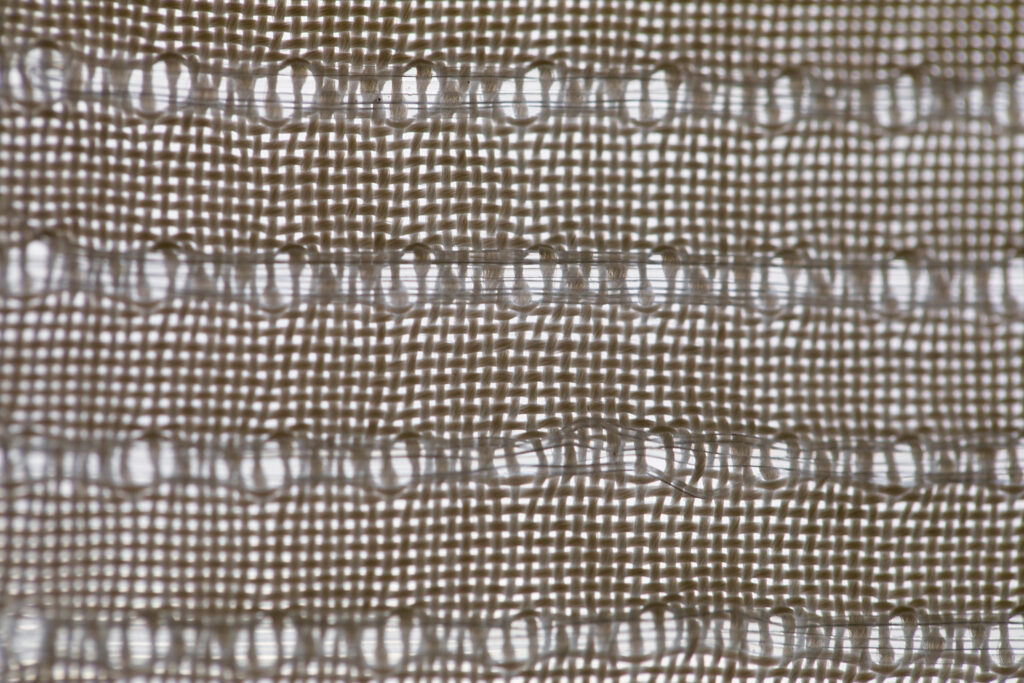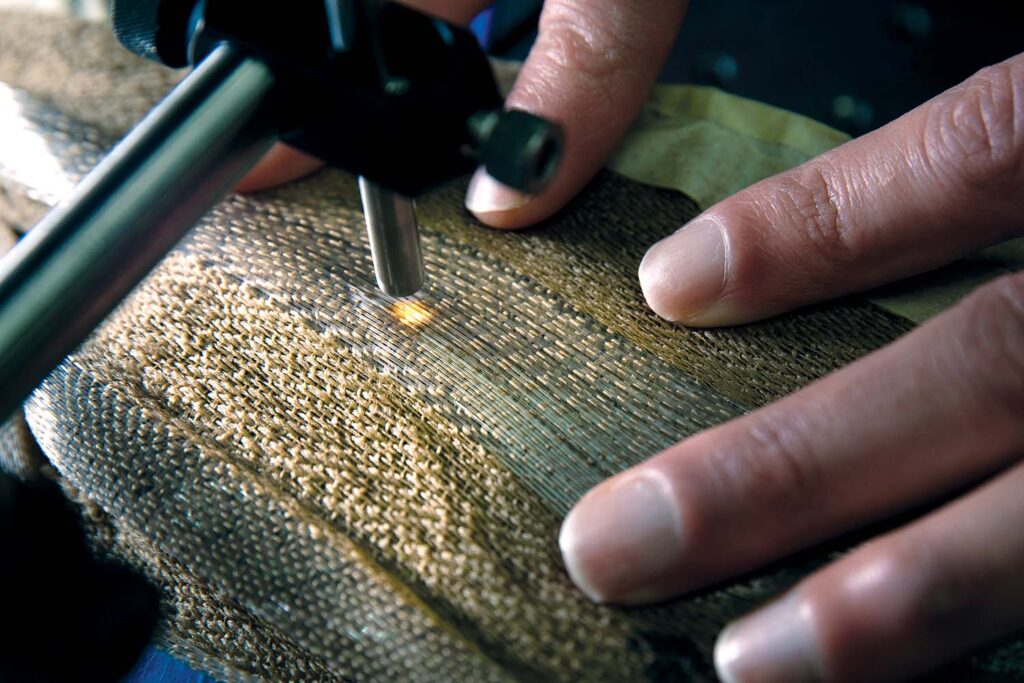
When it comes to recycling, one issue is the efficient and correct sorting of materials. Regarding textiles, not all fabrics sent to recycling have tags, or the tagless information printed on them has worn off. Even if a garment has a tag, no recycling sorter is going to take each individual piece, look for the tag listing the mix of fiber content, and then place it in a corresponding pile by ratio of the different types.
To aid in automated textile recycling, researchers at the University of Michigan and MIT’s Lincoln Laboratory have developed a technique for weaving photonic fibers into fabrics to create a kind of barcode that would be visible in near-infrared sorting systems. These systems are already in use by recyclers to sort different types of plastics.

“For a truly circular recycling system to work, it’s important to know the precise composition of a fabric—a cotton recycler doesn’t want to pay for a garment that’s made of 70% polyester,” says Brian Iezzi, lead author of the university study. “Natural optical signatures can’t provide that level of precision, but our photonic fibers can.”

The fibers are made from an acrylic and polycarbonate preform feedstock where each individual layer is clear; taken together, they bend and refract light to shimmer like butterfly wings do.
“The photonic fibers only need to make up a small percentage—as little as 1% of a finished garment,” says Iezzi. “That might increase the cost of the finished product by around 25 cents—similar to the cost of those use-and-care tags we’re all familiar with.”

More good news: The photonic fibers can be used with the same equipment already used by textile makers.
Research is continuing on making them thinner while still keeping their reflectivity at the desired wavelengths as well as turning them into a thread that could be sewn into a garment instead of directly woven.

The research was published in Advanced Materials Technologies and was supported by the National Science Foundation and the Office of the Under Secretary of Defense for Research and Engineering.
 TEXTILES.ORG
TEXTILES.ORG


